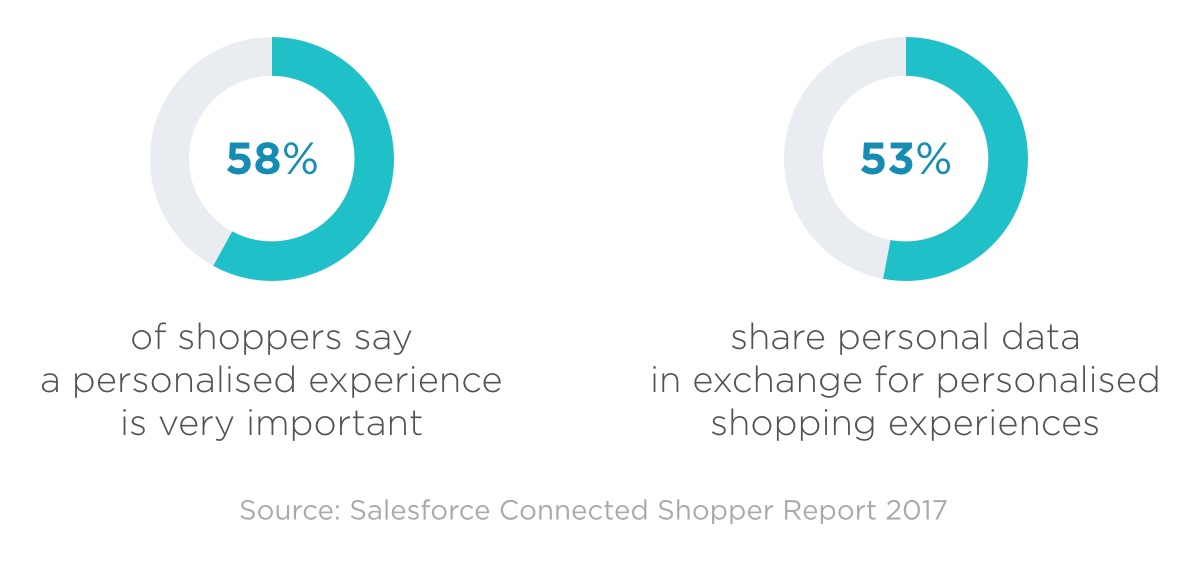By Stephane Paraiso, managing director of Azur Digital
Long before the Internet and mobile phones, consumers have been accustomed to personalized relationships in their favorite stores where salespeople who knew their habits and preferences well would guide them accordingly.
Consumers are nowadays connected and brands have become global. They expect personalized relationships with their favorite brands wherever they are, whenever it is relevant to them. We live in the age of omnichannel personalization.
Whether it is to build awareness, acquire new customers at a lower cost or develop long-term relationships to increase the lifetime value of loyal customers, omnichannel personalization has an impact on retailers’ bottom line.
Omnichannel personalization is becoming crucial for brands and retailers. According to the State of the Connected Customer survey, 52 percent of consumers are somewhat likely to switch brands if a company doesn’t make an effort to personalize their communications to them. Moreover, if a brand doesn’t recommend a customised list of products in marketing messages, 47 percent of consumers will move from the brand’s website to Amazon.

At the same time, we are seeing a rise in adoption of adblockers, opt-in management and pre-filtered commercial inbox, due to irrelevant communication and high commercial pressure. Apple recently released “Intelligent Tracking Prevention” on its web browser, leaving brands with a tiny 24-hour window for retargeting.
Moreover, customers are now wary about sharing their data. As a result, it becomes increasingly difficult for retailers and agencies to build the customer knowledge needed for them to be relevant in their communications.
A major relationship asset for brands and retailers
The omnipresent Amazon has a wealth of data about its customers, from account information to browsing, purchase and review history. This allows the behemoth to power its recommendation engine which accounts for 35 percent of the marketplace’s sales. However, it is worth noting that according to the Retail Personalization Index 2017, Amazon “only” ranks 17th while Sephora leads the pack. The beauty brand has notably introduced a series of self-service virtual shopping assistants (both on its website and in the physical branches) to personalize customer exploration of their product lines. By adopting a coaching approach to beauty, Sephora can not only enhance conversion rates but also increase customer lifetime value.
Through their unique relationship with their customers, brick and mortar retailers have access to massive customer information they can be tapped into thanks to loyalty programmes, point of sale transaction history, but also sales associates unique knowledge through observation and experience. Much more than a mere tactical weapon, well executed omnichannel personalization simply means better customer relationship and more sales across channels. This indeed enables:
- Consistency across touchpoints
- Offer and promotion relevance
- Appropriate and timely communication
- Better customer loyalty management
Retailers that have introduced personalization see sales gains of six to ten percent, according to BI Intelligence in November 2017.
The key to getting it right? Think big, start small
Though the needed technology is often available and Artificial Intelligence is high on marketers’ agendas, the fact remains that customers do not live in a world of consistent omnichannel experience and personalization.
Trying to go big from day one is not necessarily the fastest way to reach omnichannel personalization maturity. There are numerous technology, human and process parameters that need to be mastered all at once. Getting them all right across multiple channels and touchpoints is a challenge that requires significant operational capabilities.






